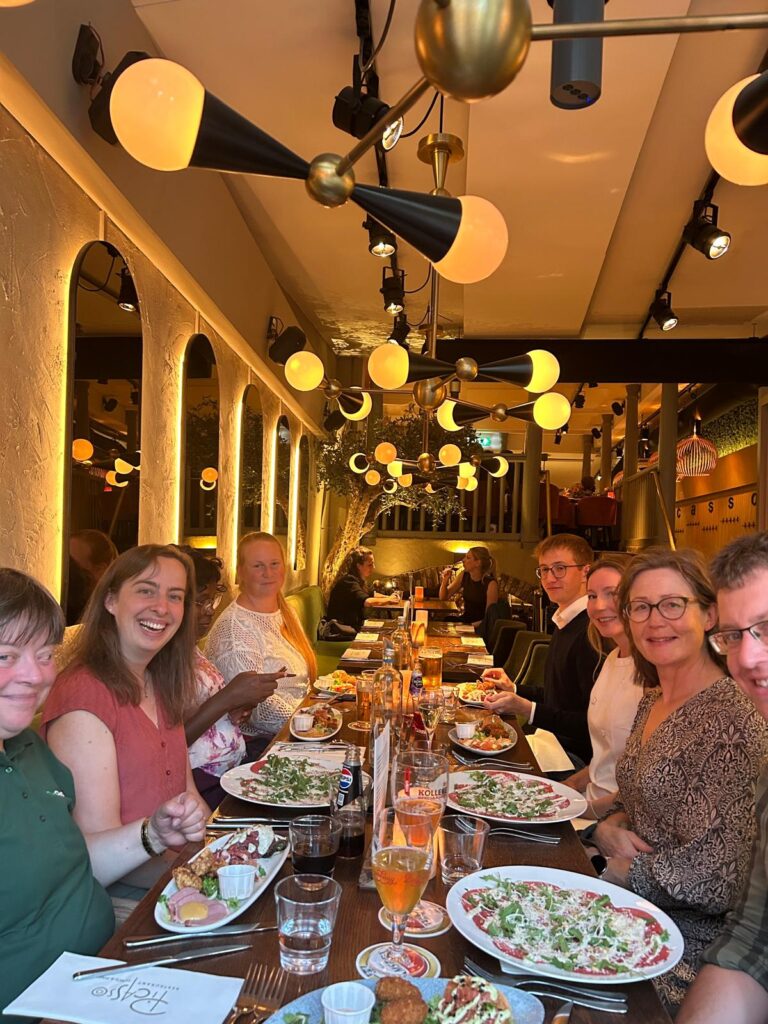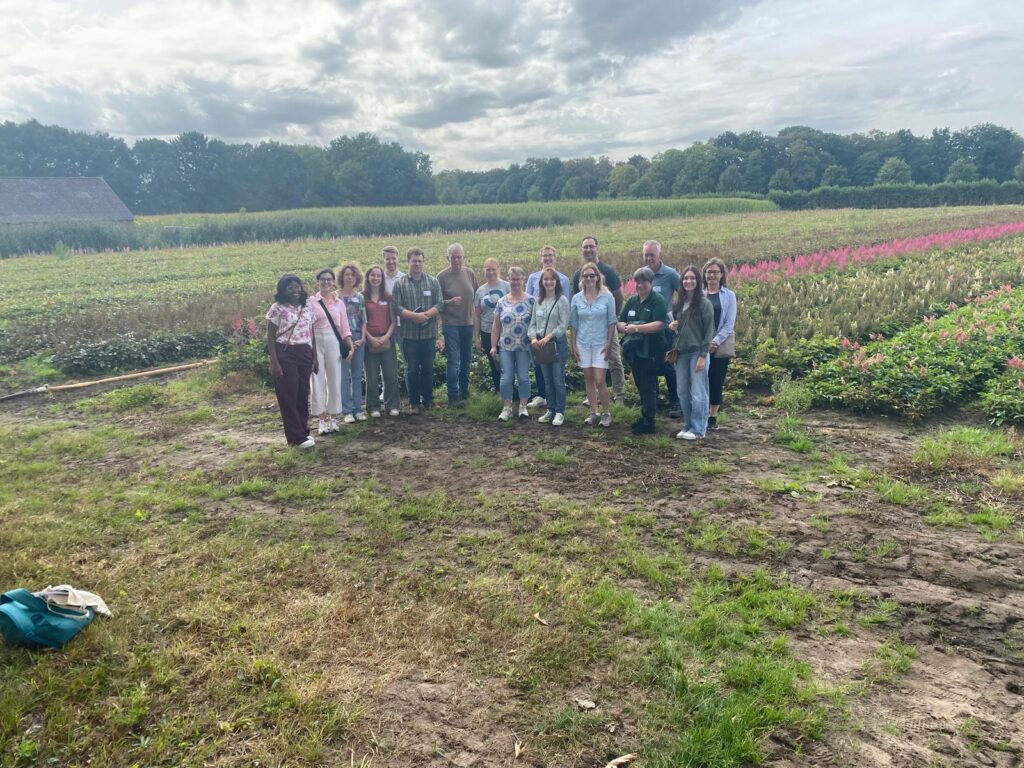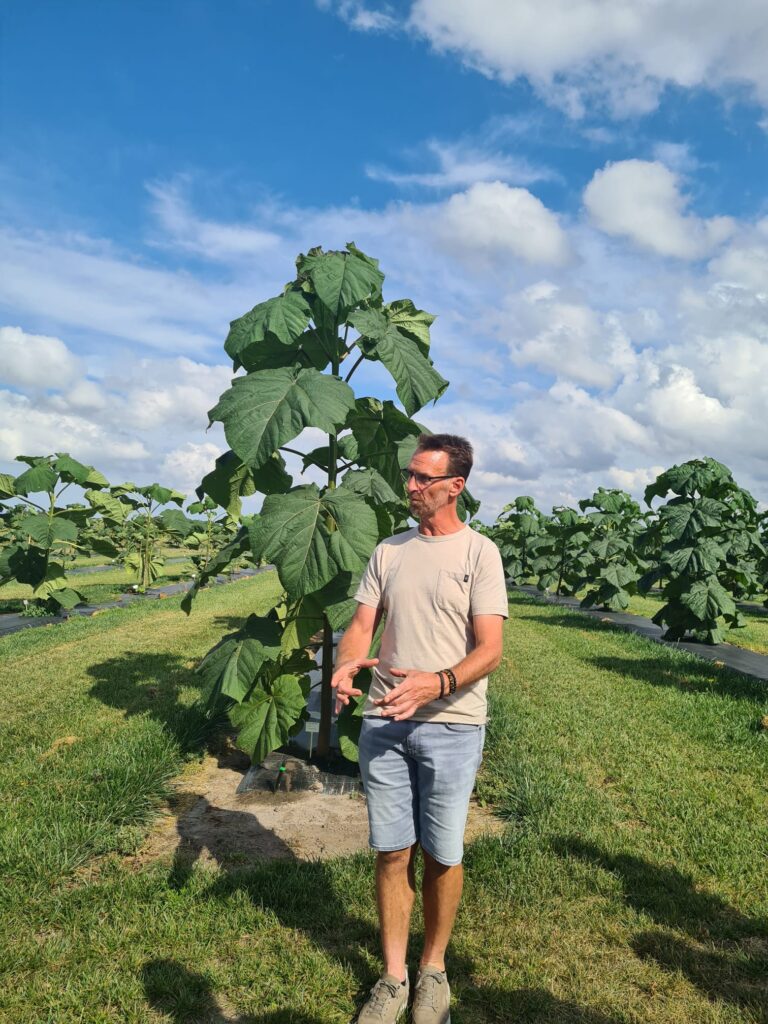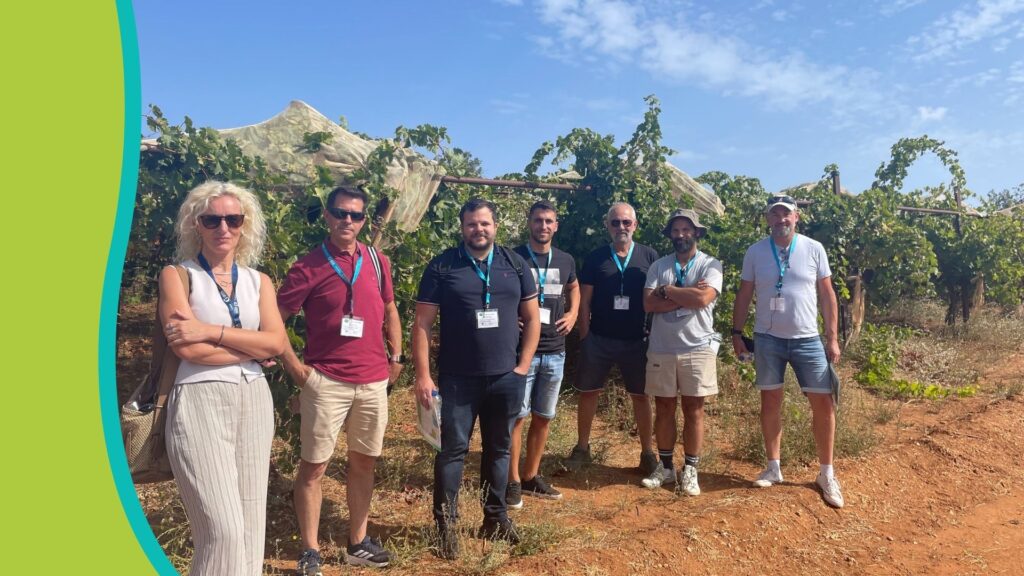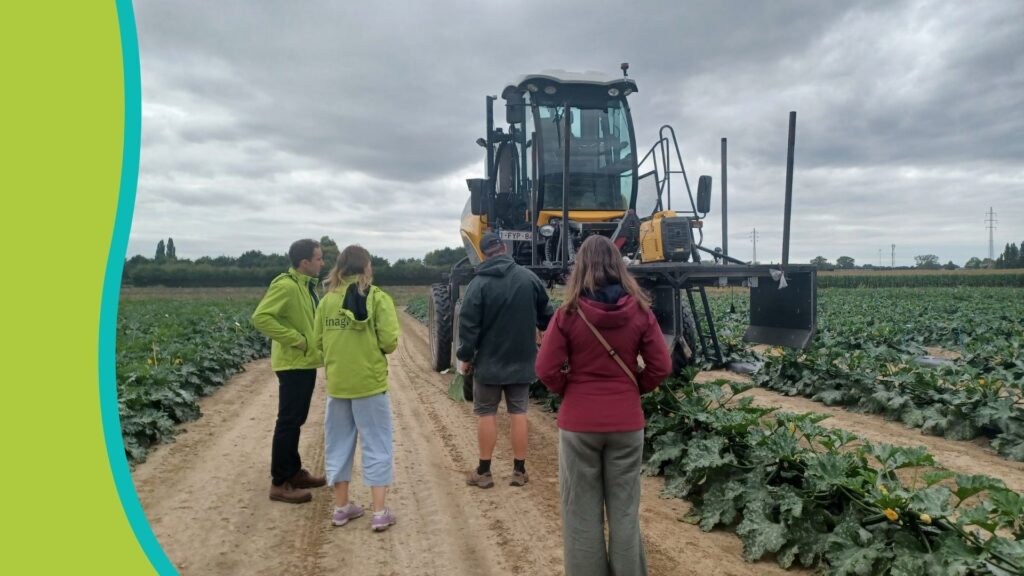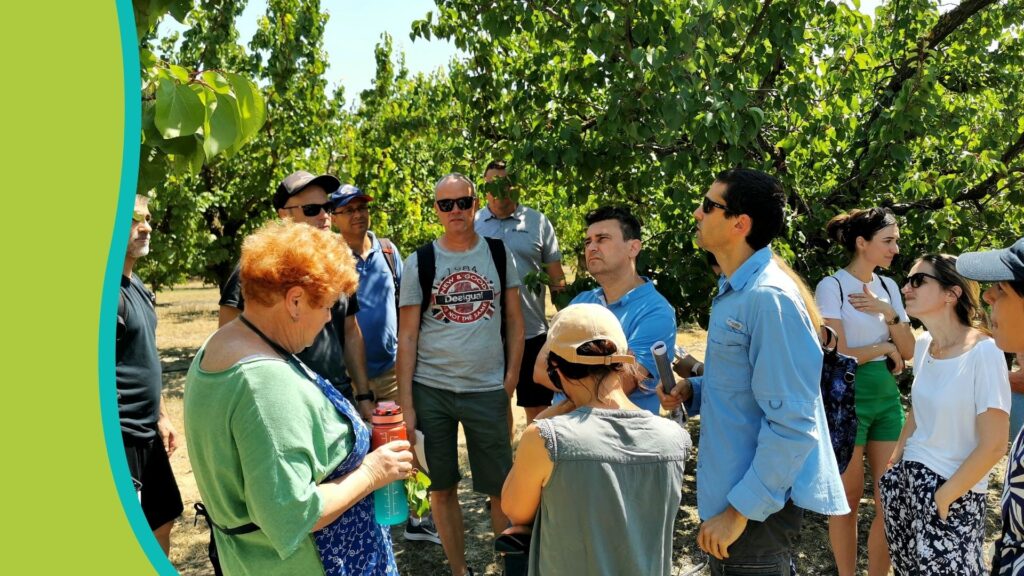The cross-visit in the Netherlands brought together 20 participants and was hosted by ZLTO. The group spent the day with Piet-Hein Kapteijns, whose farm provided the setting for exploring a novel approach grounded in one central belief: that nature, when allowed to function fully, is the most powerful force in agriculture. Piet-Hein explained how restoring natural cycles—particularly carbon cycling, humus formation, and the exchange of minerals between soil and plant roots—allows the entire system to become self-sustaining once again. For him, the task of farming is to support these processes through thoughtful cultivation measures rather than relying on external inputs.
Farm Context
Piet-Hein Kapteijns manages two farm sites located in ’s-Hertogenbosch and Veghel, with roughly 50 hectares of open fields and 3 hectares of greenhouses. The farms sit within the typically mild and humid Dutch maritime climate and are characterized by sandy soils, which shape both irrigation requirements and nutrient management strategies. A diverse crop rotation forms the backbone of production: leek, Astilbe, strawberry, and peonies, each grown in cycles adapted to their needs. Astilbe is particularly distinctive, aimed at a niche, high-quality market with only 18 hectares grown nationally. Strawberry propagation spans both greenhouses—where mother plants benefit from insect nets—and open fields, where 45 varieties grow in waiting beds. This blend of protected and open-field cultivation allows Piet-Hein to maintain high quality while supporting soil health and biodiversity.
Adaptation and Implementation
Transitioning to more ecological methods required multiple resources. Organic pesticides were used for pest and disease control, while UV-light robots helped manage powdery mildew in strawberries without chemicals. Nutritional support came from OPF organic plant feed, and Japanese oats were introduced as a cover crop to suppress nematodes. Alongside physical inputs, advisory support and technical knowledge were essential—particularly for understanding the biological processes that underpin organic fertilization, composting, and soil life.
Implementing these methods also brought challenges. Open-field seeding and propagation were affected by unpredictable weather and soil conditions. Thrips infestations remained persistent despite integrated measures. Phacelia germinated unevenly, creating irregular plant stands. Periods of limited rainfall increased water stress and reduced the effectiveness of biological processes at key growth stages.
To overcome some of these obstacles, Piet-Hein made several adjustments. Strawberry propagation shifted to waiting bed plants to improve uniformity and plant health. A plant sauna system was introduced, making winter production possible while helping control pests and diseases. Hot water and CO₂ treatments were combined to create stronger control effects. Japanese oats proved effective against nematodes, though they required deliberate termination in winter. A broader mix of cover crops was added to enhance soil structure and support the long-term resilience of the farm.
Results and Experience
The changes brought several benefits. Astilbe and leek now grow at a more controlled pace, allowing Piet-Hein to meet delivery dates reliably. Pests are less attracted to the crops, reducing the need for chemical inputs, particularly in strawberries and leeks. Hot water treatments eliminate nematodes and prevent premature flowering, and systems like CATT help control spider and Tarsonemidae mites. Soil steaming in autumn reduces soil-borne diseases and viruses, contributing to improved crop quality and a more sustainable approach overall.
But there are trade-offs. Japanese oats must be killed during winter, and Dutch regulations require that fields must always maintain a green cover, increasing the workload for establishing new crops. Weed management remains labour-intensive and costly; laser weeding is effective but expensive. Organic fertilizers release nutrients slowly, which can cause delays in plant growth, particularly in crops that need rapid nitrogen uptake like leek. Weather variability also introduces risks: heavy rainfall can wash nitrogen from the soil, warm springs worsen thrips damage, and high water tables can favour nematodes. Soil steaming, although effective, requires a significant amount of energy and may not be viable long-term. At present, these methods increase production costs by around EUR 500 per hectare compared to conventional practices.
Future Modifications
Piet-Hein is considering alternative cover crops. Phacelia shows promise but can behave like a weed if not managed properly. Marigold was tested but proved unsuitable, as it encourages nematodes and fails to survive winter. Future adjustments will focus on identifying cover crops that balance effective nematode suppression, manageable growth habits, and compatibility with the existing rotation.
Advice from the Farmer and Advisors
Reflecting on his experience, Piet-Hein offered simple but direct advice: “Be willing to try, and don’t use too little organic fertilizer. Use high-quality compost to keep weeds under control. And believe in what you’re doing—otherwise don’t bother starting.”
His advisor added that many of the processes involved in this approach are still being understood scientifically. Patience, experimentation, and trust are essential. Success depends on careful observation and a readiness to adjust practices as needed, especially when working with cover crops, organic fertilization, hot water and CO₂ treatments, and CATT systems.
Resources, Skills, and Limitations
Electricity availability and cost influence the use of energy-intensive equipment such as UV-C robots or plant saunas. Water access, nitrogen availability, weed pressure, pests, and diseases all shape the level of labour required and the effectiveness of biological methods. High investment costs remain a barrier for specialized equipment, and the efficiency of systems like CATT varies depending on crop tolerance and pest biology.
Farmers implementing similar approaches elsewhere would need strong advisory support, reliable access to organic fertilizers and compost materials, market opportunities (including low-carbon certification schemes), and spaces for training and knowledge exchange. Skills in soil biology, organic fertilization, cover crop management, IPM, and specialized treatment systems form the core competencies of this approach.
Highlights of the Visit
What stood out most during the visit was the openness and curiosity displayed by the group. Participants exchanged experiences and perspectives freely, creating a constructive atmosphere where learning flowed in multiple directions. Although no formal feedback was collected, the overall impression was highly positive, and the visit offered valuable insights into integrating natural processes into modern horticultural production.

